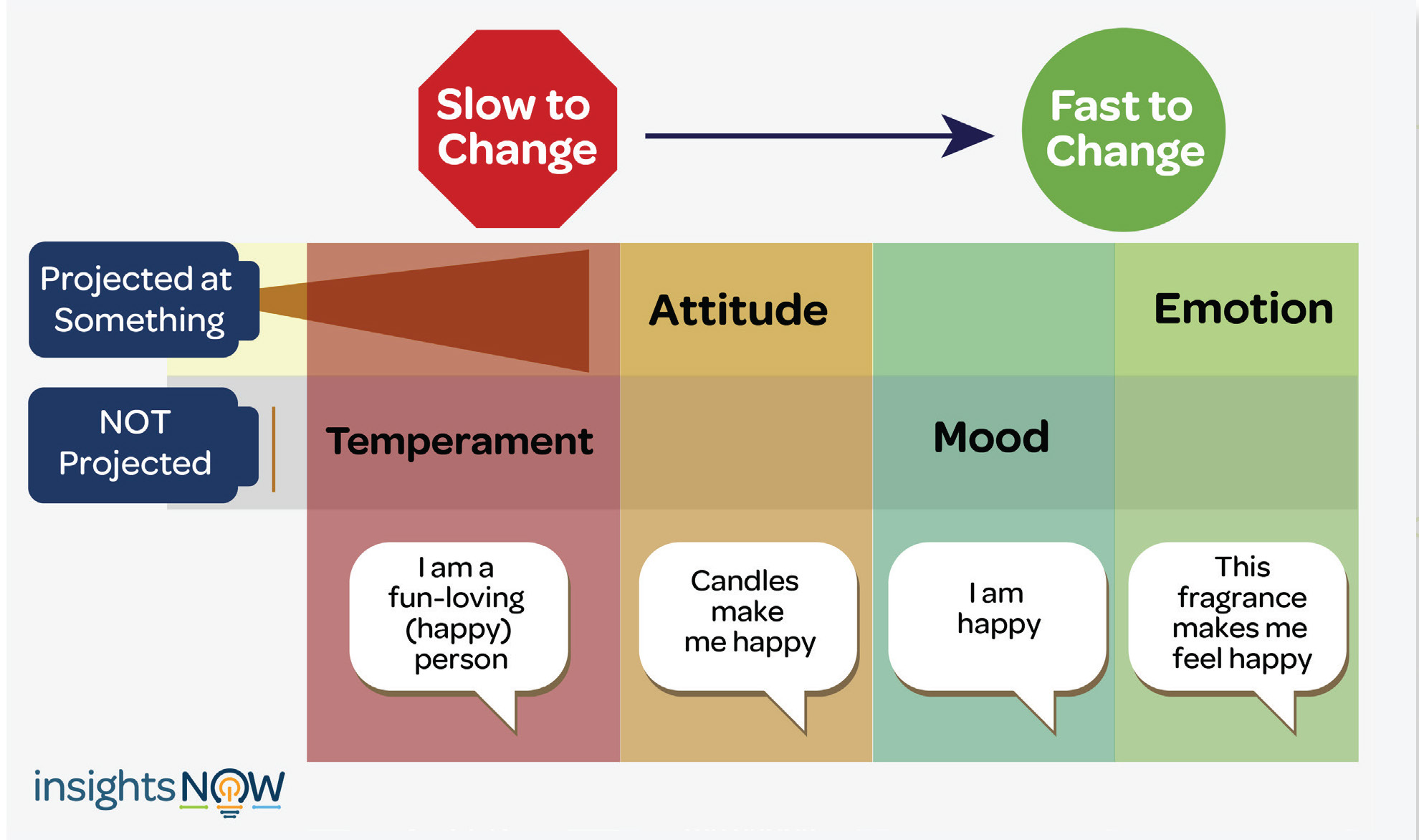Getting on the same page about how to define what consumer emotions are and how they are used is important to the success of any innovation. It is part of being human to use the same words or phrases to describe very different things. Thus, when it comes to describing how we are feeling, consumers are notorious for talking about very different feelings but using the same words. To gain the behavioral insights decision-makers need, researchers must take that convoluted language and define and understand what emotions are—and what they are not. This helps structure research in such a way to find the answers needed to make the best business decisions.
Brands know that when they make connections with consumers through the right emotional responses, they have a better chance of creating lasting relationships with those consumers. So how should we think about emotions in order to uncover the insights about them that equal marketplace success? The first step is aligning our definitions.
A Continuum of Emotions
Emotions can be thought of as being part of a continuum—that goes from temperament and attitude that are slower to change all the way to moods and emotions which change more rapidly.

As you can see on the above graphic, slowest to change is human temperament—this is who someone fundamentally is as a person. Temperament is not projected at anything. Someone might define themselves, their temperament, as “I am a fun-loving person” or “I am a happy person.”
Attitudes are something altogether different than temperament. They also are slow to change, like temperament. But unlike temperament, attitudes are projected at something. Someone might describe their attitude about something, as “I like candles—candles make me happy.”
And then we have moods. Unlike temperament and attitude, moods are faster to change. We don’t generally think about a person projecting a mood at something. Mood is really just about someone’s general state, as “Right now, I feel happy.”
Finally we get to emotions. Emotions are very fast and fleeting—and someone may feel many different emotions all at the same time. Emotions are always projected at something, as in “The fragrance of this candle makes me feel happy.” If a person is unable to identify what is causing how they feel then they are likely talking about their emotions. For a deeper review of emotions read Capturing Consumer emotions through Visual Metaphor Approach and Implicit Testing.
Impact on Market Research
When we use the structure of speed of change and projection, we more accurately define the part of a consumer’s experience they are describing. Then we can more clearly focus innovation builds and marketing plans to ensure we succeed in the marketplace.
When conducting quantitative research, temperament, and attitudes, and to a certain extent moods, are consistently captured using a scaled agreement response. With emotions however, they are so fast and fleeting we need to use an implicit approach to capture them completely. Since we know consumer emotions have a great impact, we use our patent-pending Implicit/Explicit Test™ with metaphor projections to capture these fleeting and fast emotional responses at a subconscious level.
Get the full scoop on Emotions Testing to deepen consumer understanding here.






